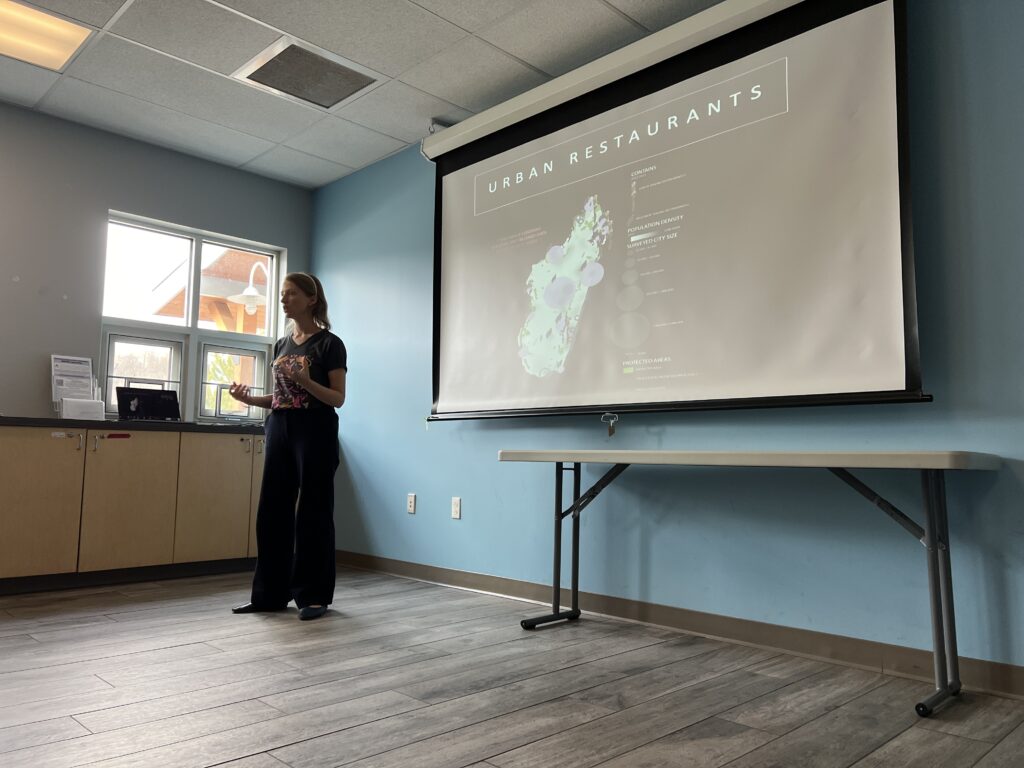On Thursday, January 11th, 2024 Essex County Turtle Back Zoo hosted a talk with Dr. Cortni Borgerson, Associate professor at Montclair State University and IUCN Primate Specialist, where she presented her work in Lemur conservation. Zoo keepers and zoo staff were invited to listen to the lecture and learn about how she is preserving this species and their environment. The Zoological Society of New Jersey is helping to support Dr. Cortni Borgerson in her mission to protect Lemurs through the Turtle Back Biodiversity Fund.
Lemurs, suborder Strepsirrhini, are primates that are found only on the island of Madagascar. There are many different species of lemurs, but are generally known for large eyes, fox-like faces, and long tails that are longer than the rest of their body. Due to habitat loss, warming temperatures, and poaching, lemur populations are dwindling with their populations declining 60% every year. However, because of their remote habitat, scientists are unable to find how many are left in the wild. Species IUCN statuses range from vulnerable to critically endangered. Lemurs are a keystone species meaning their health and population size is a good indicator on how other species and their environment are doing.
Lemurs are not the only ones suffering from global changes. Due to the warming temperatures, local Madagascar communities are unable to grow crops like they once were and more forest is having to be cut down to sustain farming. In these communities, people have no other choice but to rely on hunting local endangered wildlife, including lemurs, to feed their families.

Dr. Borgerson works directly in local Madagascar communities to not only preserve the environment but to learn from these communities and bring their traditional ecological knowledge into conservation. Through working with these communities, they found a conservation strategy that starts in an unusual place: sakondry bugs, also known as the bug that tastes like bacon. These bugs can be found growing on beanstalks and are very high in nutrients. Beanstalks are also hardy plants that are able to grow almost anywhere and at any temperature. By planting beanstalks, local people are able to eat both the beans and the sakondry bugs. They do not have to rely on hunting endangered wildlife for food and are able to join Dr. Cortni Borgerson in protecting the environment. Dr. Borgerson’s work bridges the gap between conservation and community by working with local communities in Madagascar and using their traditional knowledge in conservation strategies.
Every year, our planet loses too many irreplaceable species to extinction. The Zoological Society of New Jersey is committed to helping to stem this tide with the Turtle Back Biodiversity Fund. The Fund creates partnerships with worldwide causes that engage in wildlife conservation. Specifically, the Fund administers grants – and seeds local programs – in support of effective fieldwork and research relevant to the saving of species.
To learn more, visit our website and consider donating to protect important species such as lemurs.
